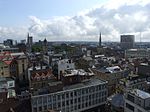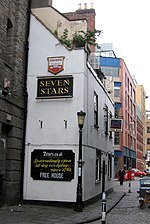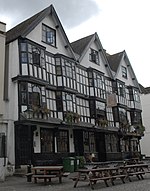St Thomas the Martyr, Bristol

St Thomas the Martyr is a former Church of England parish church on St Thomas Street in the Redcliffe district of the English port city of Bristol. It has a 14th-century tower, but the nave was rebuilt 1791–93 by James Allen. A substantial reordering was carried out by William Venn Gough between 1878 and 1880, and the top of the tower was remodeled with spirelet, pinnacles, and pierced parapet by Gough in 1896–97. Four paintings for the reredos were commissioned from the German artist Fritz von Kamptz in 1906, and are now housed in the south aisle.Although the church survived the Bristol Blitz of the Second World War, the congregation declined after the war and the church was finally declared redundant. It is in the care of the Churches Conservation Trust, having been vested in the Trust on 17 February 1988. The organ was built by John Harris in 1729, and attracted the admiration of Handel.It is recorded in the National Heritage List for England as a designated Grade II* listed building.
Excerpt from the Wikipedia article St Thomas the Martyr, Bristol (License: CC BY-SA 3.0, Authors, Images).St Thomas the Martyr, Bristol
Redcliff Street, Bristol Redcliffe
Geographical coordinates (GPS) Address Nearby Places Show on map
Geographical coordinates (GPS)
| Latitude | Longitude |
|---|---|
| N 51.4527 ° | E -2.5914 ° |
Address
Redcliff Street 138-141
BS1 6QP Bristol, Redcliffe
England, United Kingdom
Open on Google Maps









